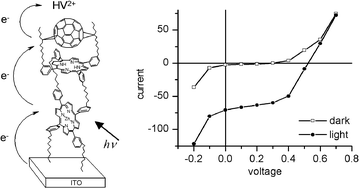Photoinduced electron transfer in multilayer self-assembled structures of porphyrins and porphyrin–fullerene dyads on ITO†
Abstract
A new strategy for constructing well-ordered, self-assembled multilayer structures of photoactive donor–acceptor systems has been developed. In this approach indium–


 Please wait while we load your content...
Please wait while we load your content...